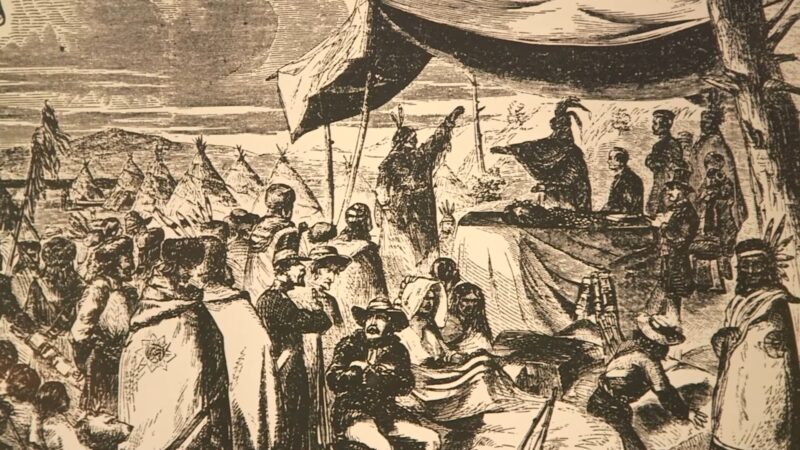You know, there’s something truly special about Jackson County, Colorado. The moment I first arrived, I was captivated by the breathtaking landscapes – the rugged mountains, the vast plains, the serene tranquility.
I quickly realized that the true beauty of this place lies not just in its physical attributes, but in its people and their stories. The demographics of Jackson County, like any place, are a living, breathing testament to its history and its future.
They tell a story of change, resilience, and diversity. They reveal patterns of migration, economic shifts, and societal transformations.
And they offer a glimpse into what the future might hold. That’s why I find the study of demographics so fascinating. It’s like peeling back the layers of an onion, each one revealing something new and unexpected about the community.
So, let’s embark on this journey together, exploring the rich tapestry of Jackson County’s demographics, and uncovering the stories they have to tell.
Historical Background

The history of Jackson County is as diverse and dynamic as its landscapes. From its early days as a hub for trappers and traders, through the gold rush and the railroad boom, to the modern era, the county’s past is a fascinating tale of growth, change, and resilience.
The county was officially founded on May 5, 1909, but its history stretches back much further. Initially, the area was the hunting grounds of the Ute and Arapaho Indians.
However, the discovery of valuable minerals attracted settlers and sparked a dispute between Grand and Larimer Counties, both of which claimed North Park as part of their territory. The Colorado Supreme Court eventually ruled in favor of Larimer County in 1886.
Dissatisfied with the decision, the residents of North Park pushed for the creation of their own county, leading to the formation of Jackson County in 1909. Over the years, the county’s population has fluctuated, influenced by various historical events and economic shifts.
For instance, the county’s population grew from 1,013 in 1910 to 1,798 in 1940, likely due to economic opportunities. However, the population has seen a general decline since the 1940s, with the 2020 census recording a population of 1,379.
The history of Jackson County is a testament to the resilience and adaptability of its people. Each wave of migration, each shift in the economy, and each societal change has left its mark on the people who call this place home.
As we delve into the demographics of Jackson County, let’s keep in mind the rich tapestry of history that underpins them. Because to truly understand the present, we must first understand the past.
Present Day Demographics

Age
The age distribution in Jackson County is fairly balanced, with a significant proportion of both young and older residents. This balance creates a vibrant mix of energy, wisdom, and experience, contributing to a dynamic and lively community.
The young population brings in fresh ideas, innovation, and a forward-thinking mindset. On the other hand, the older population provides a wealth of experience, wisdom, and a sense of continuity with the past.
| Age Group | Percentage |
| Persons under 5 years | 4.1% |
| Persons 6-18 years | 13.6% |
| Persons 19-40 years | 25.6% |
| Persons 41-65 years | 30.4% |
| Persons 65 years and over | 26.3% |
Racial Distributions
The racial and ethnic composition of Jackson County is predominantly White, but there is a growing diversity within the community. This diversity contributes to a rich cultural tapestry, with different traditions, festivals, and cuisines adding to the cultural richness of the county.
It also fosters a sense of inclusivity and acceptance, making Jackson County a welcoming place for everyone.
| Race/Ethnicity | Percentage |
| White alone | 94.8% |
| Black or African American alone | 0.3% |
| American Indians and Alaska Natives alone | 3.0% |
| Asian alone | 0.2% |
| Native Hawaiian and Other Pacific Islanders alone | 0.0% |
| Two or More Races | 1.7% |
| Hispanic or Latino | 13.9% |
| White alone, not Hispanic or Latino | 83.3% |
Household Size

The household size and education level in Jackson County reflect the economic conditions of the region. The majority of households are composed of one or two people, indicating a trend towards smaller family units.
This could be due to various factors such as economic conditions, lifestyle preferences, or population aging. The education level is fairly distributed, with a significant proportion of the population having completed high school and a quarter having obtained a bachelor’s degree or higher.
This indicates a well-educated workforce, which is a key driver of economic growth and development.
| Household Size | Percentage |
| Single Person House | 34.5% |
| 2 Person House | 39.5% |
| 3 Person House | 12.5% |
| 4 Person House | 8.5% |
| 5 or More Person House | 5% |
Education
The education level in Jackson County is fairly distributed, with 35% of the population having a high school or GED qualification and 27% having a bachelor’s degree or higher.
| Education Level | Percentage |
| No Qualification | 14% |
| High School or GED | 35% |
| Some College or Associates Degree | 27% |
| Bachelor’s Degree or Higher | 27% |
Wealth
The wealth distribution in Jackson County shows a wide range, suggesting a diverse economic landscape within the county. While there are households in all income brackets, there is a need for continued efforts to address income inequality and ensure economic opportunities for all residents.
| Income Bracket | Percentage |
| Less than $10,000 | 7.1% |
| $10,000 to $14,999 | 3.6% |
| $15,000 to $24,999 | 8.9% |
| $25,000 to $34,999 | 8.9% |
| $35,000 to $49,999 | 14.3% |
| $50,000 to $74,999 | 19.6% |
| $75,000 to $99,999 | 14.3% |
Future Projections

Looking ahead, the demographics of Jackson County are expected to continue evolving, shaped by a variety of factors ranging from economic conditions to social trends.
While it’s challenging to predict specific demographic changes, we can make some educated guesses based on current trends. For instance, the county’s population may continue to age, reflecting broader societal trends towards longer lifespans and lower birth rates.
This could have significant implications for services like healthcare and social security, which will need to adapt to meet the needs of an older population. The racial and ethnic diversity of the county is likely to increase, reflecting ongoing immigration and changing social attitudes.
This could enrich the cultural life of the county, bringing in new traditions, cuisines, and perspectives. However, it could also present challenges in terms of social integration and community cohesion, which will need to be managed carefully.
In terms of education and wealth, much will depend on the economic development of the county. If the county can attract new businesses and industries, this could create jobs, raise incomes, and increase the demand for higher education.
However, if economic growth is slow, the county may struggle with issues like unemployment, income inequality, and underinvestment in education.
FAQ

What is the historical background of Jackson County?
Jackson County was officially founded on May 5, 1909. Initially, the area was the hunting grounds of the Ute and Arapaho Indians.
The discovery of valuable minerals attracted settlers and sparked a dispute between Grand and Larimer Counties, both of which claimed North Park as part of their territory. The Colorado Supreme Court eventually ruled in favor of Larimer County in 1886.
Dissatisfied with the decision, the residents of North Park pushed for the creation of their own county, leading to the formation of Jackson County in 1909.
What are the future projections for Jackson County?
The demographics of Jackson County are expected to continue evolving, shaped by a variety of factors ranging from economic conditions to social trends. The county’s population may continue to age, the racial and ethnic diversity is likely to increase, and much will depend on the economic development of the county for education and wealth distribution.
What is the significance of studying demographics?
Studying demographics helps in understanding the people, their stories, and the forces that shape their lives. It’s about recognizing the diversity and richness of our community and appreciating how each individual contributes to the tapestry of Jackson County.
Understanding these demographic trends is crucial for planning future development and ensuring the well-being of all residents.
Final Words
In the end, the study of demographics is not just about numbers or statistics. It’s about understanding the people, their stories, and the forces that shape their lives.
It’s about recognizing the diversity and richness of our community and appreciating how each individual contributes to the tapestry of Jackson County. The demographics of Jackson County, Colorado, tell a story of change, resilience, and diversity.
They reveal patterns of migration, economic shifts, and societal transformations. They offer a glimpse into what the future might hold.
As we’ve seen, understanding these demographic trends is crucial for planning future development and ensuring the well-being of all residents. As we look to the future, we can expect that the demographics of Jackson County will continue to evolve.
These changes will present both challenges and opportunities. But if we approach them with understanding, flexibility, and a commitment to inclusivity, we can ensure that Jackson County remains a vibrant, culturally relevant, diverse, and thriving community for generations to come.
So, let’s continue to explore, learn, and grow together. After all, that’s what being part of a community is all about.






